You can kill fungus in soil by treating it with anti-fungal products and monitoring its growing environment and conditions.
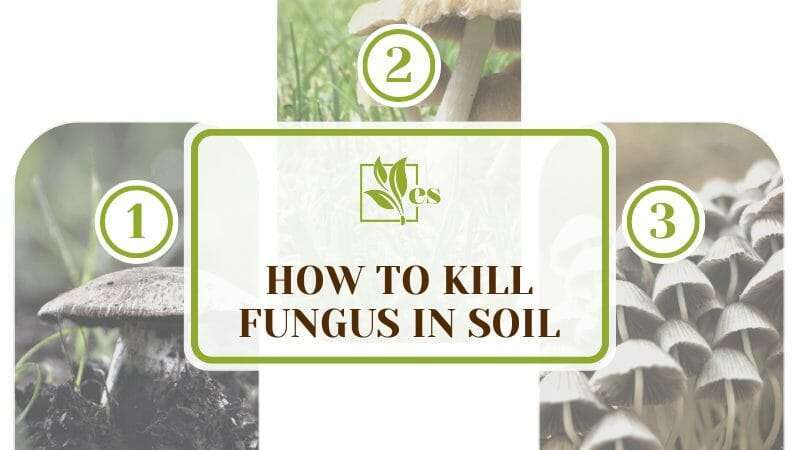
Any fungal growth has detrimental effects on plants by impacting growth, health and appearance and therefore needs to be tackled properly.
In this article, our gardening experts teach you how you can easily get rid of fungus from the garden soil and also reduce the chances of its occurrence.
You will get an in-depth look at all the steps involved in the process, tips to prevent it, and techniques by which you can protect your plant to keep it lush green and healthy.
JUMP TO TOPIC
- How To Kill Fungus in Soil?
- – Step 1: Identify Fungal Growth and Snip off the Infected Plants
- – Step 2: Dig Out the Severely Sick Plants
- – Step 3: Clean the Soil of Garden Debris
- – Step 4: Scale Back on Fertilizer Use
- – Step 5: Maintain the Right Water Schedule
- – Step 6: Use Soil Fungicide
- – Step 7: Use Boiling Water To Complete the Process
- – Step 8: Prune Heavily Infected Leaves
- What Are Natural Antifungals for Soil?
- How Do You Get Rid of Fungus in Soil Containers
- Make The Soil Fungus Free
How To Kill Fungus in Soil?
You can kill fungus in soil easily by maintaining the right growth conditions and treating it with inorganic or organic antifungal compounds such as apple cider vinegar, lime juice, clove oil, or garlic.
Additionally, good plant hygiene is required to tackle the pathogen menace and limit fertilizer use with an appropriate watering schedule. In this below section, we discuss each of these steps in more detail to keep the potting soil clean and clear. Read on for all the information.
– Step 1: Identify Fungal Growth and Snip off the Infected Plants
The first step is to look out for tell-tale signs that your plant has indeed been infected with fungus. You can easily spot them in the form of white, gray, or brown growth with a velvety texture and powdery mildew. In some cases, you may see yellow fungus in the soil which is also solvable.
They spread across the garden soil and can even emit a foul odor. Your plant foliage too will manifest signs of stunted or slow growth, wilted or curled leaves, and limp stems.
– Step 2: Dig Out the Severely Sick Plants
Once you have accurately identified the affected plant, dig it out of the soil, especially when the infection is major. For minor infections, you can still retain the plant and treat it with fungicides, however in the case of more severe instances, it will be almost impossible to treat and it is best to dispose of them.
Fungal spores thrive in plants and the garden soil for some time and digging out sick plants Is a solution to ensure that spores don’t land on other nearby plants thereby infecting them as well.
– Step 3: Clean the Soil of Garden Debris
Eliminate all garden debris in the soil such as fallen leaves, dried grass, and other wild weeds. Additionally, snip away any low-lying branches or leaves drooping over the base of the plant.
Debris and other intruding foliage block sunlight and reduce ventilation around the soil of the plant and increase humidity, it is important to keep in mind that Fungi love humid environments with no air circulation. Thus, rake up all leaves and haul out the debris to keep the soil clean.
– Step 4: Scale Back on Fertilizer Use
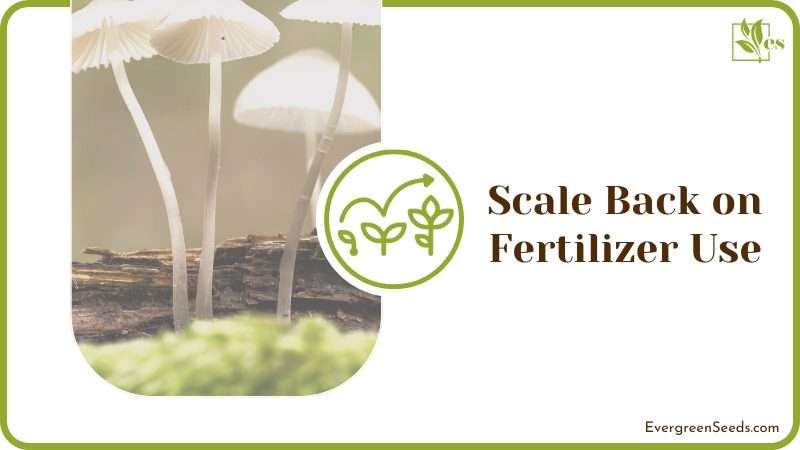
Are you using excessive over-the-top nourishment to your plants through fertilizers or inorganic plant feed? Stop using it until the growth of the pathogen has been curtailed.
Fertilizers are often a source of nourishment to the fungal spores and can easily boost their spread and concentration in the soil. Additionally, you can consider switching over to organic compost instead to provide the plant with any extra nutrition which serves as a far safer option in comparison.
– Step 5: Maintain the Right Water Schedule
One of the main contributors to fungal growth is an overwatered soggy soil. Water blocks out air spaces in the soil, preventing oxygen from reaching the roots. It leads to conditions such as leaf spots and other diseases eventually discoloring plants and wilting their stems.
Thus, water it in a proper way as per the plant’s requirement. However, if you have spotted fungal growth, immediately scale back on the watering and allow the soil to completely dry out before you add in more. Alternatively, you can remove the plant out of the soggy soil and transplant it into the fresh sterile, and porous soil
– Step 6: Use Soil Fungicide
It is not just enough to remove the infected plants from the soil, you have to effectively treat them so that the fungus in the soil does not infect any plants in the future. Pull out severely sick plants from the infected area and dispose of them at the earliest.
Apply fungicides, organic or inorganic, in small quantities in the soil by preparing a dilute solution and mixing one teaspoon of the fungicide in a gallon of water.
Do remember to cover your face with a mask as an inorganic fungicide may often let out toxic fumes. Avoid spraying directly over any fruits or vegetables.
– Step 7: Use Boiling Water To Complete the Process
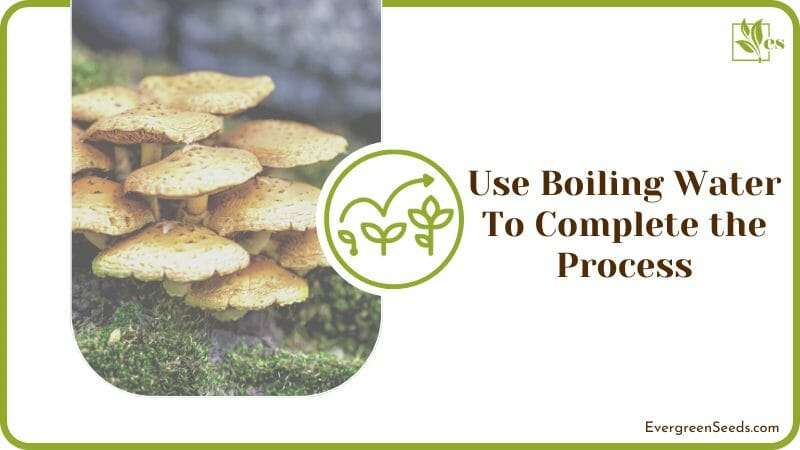
Boil water in a kettle and let it cool completely. Apply the water directly to the soil. Allow it to dry and repeat the process until all of the fungal growth has been completely removed.
– Step 8: Prune Heavily Infected Leaves
When fungal spores cling to other wet plant surfaces it can lead to conditions such as fungal leaf spots. This manifests in the form of brown and yellow spots with a red halo on the surface of the leaves.
Note that when fungi affect foliage, you must gently remove or prune the affected leaves and isolate the plant before treating it with any fungicide completely, including plant parts as well as the entire soil around.
What Are Natural Antifungals for Soil?
A natural antifungal product for soil is an effective and easily available item that can be found around your home or in your kitchen. With the help of this, you can quickly tackle fungal growth in soil.
It is safe and in most instances, if used correctly, does not cause any harm to the soil or plant. We list it below along with the procedure on how it can be put to use to kill fungus in the soil.
– Cinnamon Powder
Cinnamon powder is an effective antifungal agent and is easily available in almost all homes. All you need to do is grind some fresh and fragrant cinnamon into a fine powder and apply two spoons to every square foot of your garden. Spread directly all over the affected soil.
Let this rest for a few days during which you need to avoid watering the soil. This should satisfactorily take care of the issue making the soil plant ready.
– Turmeric Powder
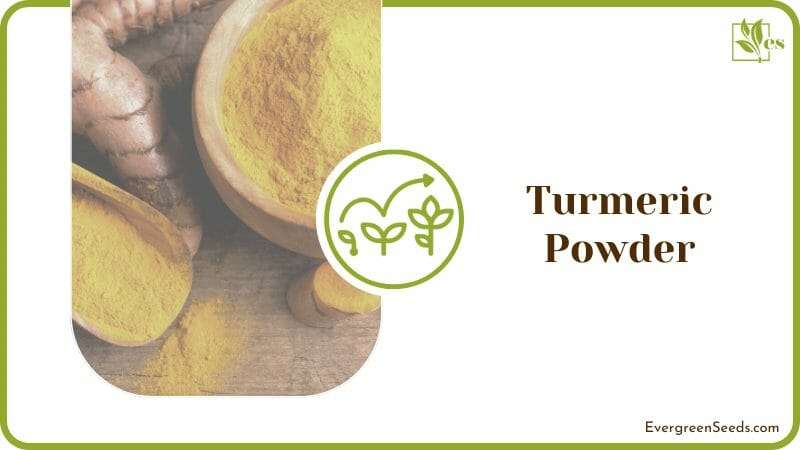
A common spice and another natural item as effective as cinnamon is yellow turmeric. It can eliminate not fungal spores but other pests and insects as well. Apply small quantities of it and sprinkle directly over the affected area.
Additionally, you can also improve effectiveness by mixing cinnamon along with it to easily kill the growth. Leave the area undisturbed for a few days after application, and then begin planting in the soil.
– Clove Oil
Clove oil contains latent heat that works towards completely getting rid of the fungus. Prepare a dilute solution of clove oil with water and spray it on the soil. Leave this undisturbed for a few days.
– Garlic Paste
Crushed garlic mixed in liquid soap or vegetable oil is another easy and organic treatment for fungus. Take eight or ten garlic pods and crush them well to make a smooth paste with water. Mix a spoon of dishwashing soap or oil to this paste and apply directly to the affected area. Let it rest for two days and repeat the process until all of the fungi are killed.
– Neem Oil
Neem oil solution fights fungus as well as bacterial parasites. Prepare a solution with water and spray it on the affected plants and the soil beneath.
Leave the area undisturbed and under direct sunlight for a few days. Additionally, you can also use crushed and dried neem leaves and scatter them all over the soil.
– Lemon Juice
A diluted solution of lime juice can do wonders in clearing up your soil area of fungal growth. However, never overdo its application as lime is acidic and can easily turn the soil acidic resulting in plant burn and other issues to the plant.
– Baking Soda
A regular household item, it comes in handy in tackling fungal growth in soil. In two liters of water, mix in one teaspoon of the soda, along with a few drops of oil. Spray directly on the affected area.
Similar to lime juice, excessive use of soda should be avoided as it can turn the soil acidic. Moreover, overuse of baking soda can lead to its accumulation in the soil which will drastically impact plant growth and foliage
– Apple Cider Vinegar

Apple Cider Vinegar is an easy and safe option to treat the soil. Mix one tablespoon of vinegar in a gallon of water. With the help of a spray bottle generously apply it all over the plant foliage as well as the soil around it. Leave it undisturbed for a few days and you would have successfully removed fungal growth.
How Do You Get Rid of Fungus in Soil Containers
The soil in a pot or a container is equally susceptible to fungal infections. You may tackle them by following the quick steps mentioned below.
– Isolate the Plant
As soon as you spot any sign of an infection in your potted plant, move it aside away from the other houseplants around. Isolation prevents spread as fungal spores are easily carried in the air and settle down on nearby hosts and favorable surfaces.
– Repot
If your infection is mild, you can consider repotting the plant in fresh and sterile soil. Gently tap the base of the pot and remove the plant in its entirety. Examine the roots for any blackened sections and snip them away gently. Tap the roots to remove all of the excess soil and discard the infected soil completely.
Soak the roots for ten minutes in a solution of water and bleach. Rinse in clean water and then place in fresh soil. Spray a fungicide and give the plant time to overcome transplantation stress.
– Move the Plant to a Sunny Spot
Nothing like a well-lit spot to tackle the issue of fungal infection and it is easiest to move a potted plant to a sunny area. Not only will it help the foliage, but it can help in keeping infections completely at bay.
This is especially effective when the growth lies right on the surface of the soil. The ultraviolet rays of the sun break down the fungal spores preventing their spread and growth.
Alternatively, remove the soil and spread it out under direct sunlight. The scorching sun can easily eliminate fungal growth. As an additional measure, you can also spray the spread soil with baking soda
– Use Chamomile Tea
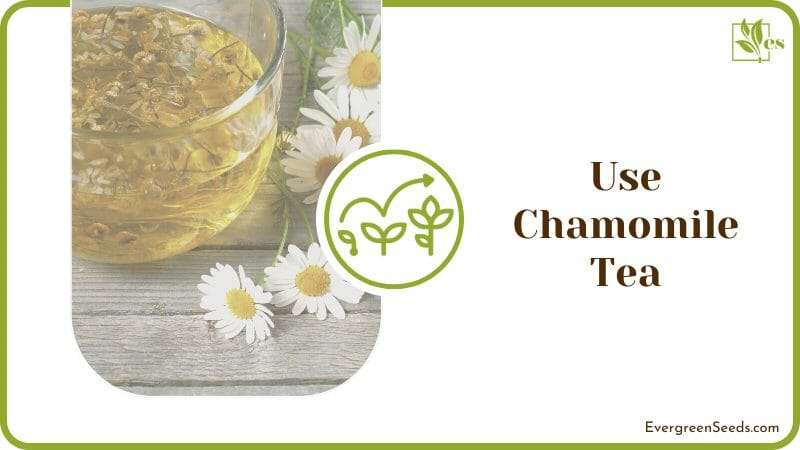
An interesting way to tackle the issue is using chamomile tea. This way will not only effectively gets rid of fungus but also prevents any recurrence of the same issue.
All you need to do is brew some chamomile tea and let the tea bag or tea leaf rest for a couple of hours. Spray this rested tea on the surface of the soil all over the affected area. Additionally, you can also leave the tea bags and the loose tea leaves on the soil for a more effective solution.
– Mix in Mulch
The potting mix needs to be light and well aerated. Mix in mulch or perlite to keep the soil porous and to ensure the water drains out properly. You can also line the bottom of the pot with tiny gravel or pebbles to improve drainage. Check if your pot drain holes permit easy flow out of the water to decrease moisture on the soil surface,
– Increase Ventilation
Place your potted plant in a well-ventilated spot. If indoors, move it close to windows where they can receive maximum light and air. Avoid cool damp places such as near kitchen sinks where the chances of any infection are high.
– Spray a Fungicide
If the soil remains infected with fungus, scoop out the top surface soil gently and dispose of it away. Proceed to treat the plant with a fungicide. If you prefer organic options, then use the easily available items in your home and kitchen such as apple cider vinegar, lemon juice, or neem.
Spray this generously all over the plant and the soil. Repeat the process until there are no traces of the fungal infection.
Make The Soil Fungus Free
You can make your soil free of fungus by identifying and treating the condition early using the above-mentioned steps, and also by preventing its occurrence. Here are some easy and practical tips to ensure the soil always remains fungus free.
– Rotate Your Crops
Plant rotation is often considered to be a cumbersome process, but this step can go a long way in preventing fungal growth. Plant crops in different places in different seasons and rotate their position in your garden.
Additionally, if your garden is small, try not to plant anything in a particular spot for a few months. This will remove the chances of an infection as the fungus will not have host plants to feed on.
– Get Rid of Sick Plants as Soon as You Spot Them
Spotted a sickly plant with discoloration due to fungus? Immediately get rid of them from the soil. It is practically impossible to save these sick ones so it makes more sense to prevent any further spread by disposing of them as soon as possible.
– Maintain Good Plant Hygiene
Regularly remove debris around the plant on the soil as fungus thrives in the warmth and dampness of fallen leaves, weeds, and twigs. Post autumn you will need to give enough time to rake up all leaves and keep the soil clear of it all.
– Use the Right Fertilizers
Some inorganic fertilizers such as azole come with antifungal properties and can reduce the risk drastically of an infection. Alternatively, organic fertilizers such as earthworm castings or compost are equally capable of providing plant nourishment and do not feed the fungal spores. Just ensure that before you apply any organic feed it has decomposed properly.
– Never Keep Your Soil Soggy
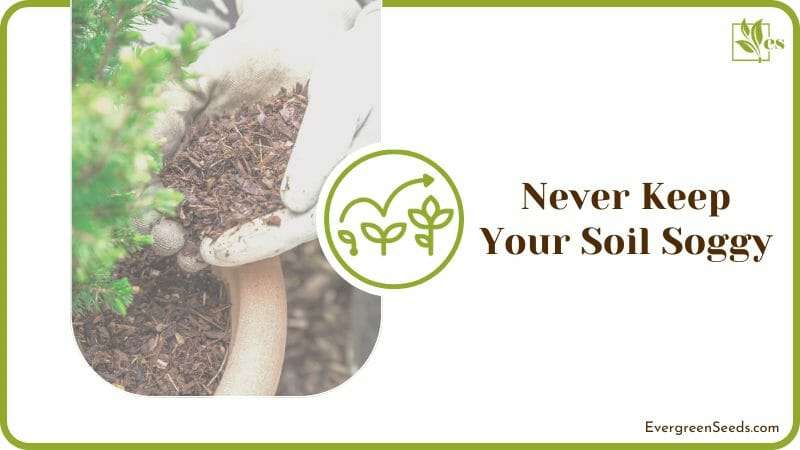
Prevent the soil from staying soggy as water can easily lead to rotting of roots and other fungal conditions. Keep the soil aerated by including perlite or mulch in the soil. An aerated soil allows the roots to get their share of oxygen to stay healthy and thrive.
– Include Disease-resistant Plant Varieties
Certain plants such as herbs and common vegetables are known to resist soil-borne diseases. Include them in your garden to counter soil-borne fungal infections.
– Provide Good Ventilation Around the Plant
Ensure your plant is in a spot where there is enough circulation of air. Keep in mind that ventilation and proper air circulation do wonders in keeping fungus away.
– Avoid Over-misting the Plant Foliage
Over misting the plant increases the moisture levels around and puts the soil and plant more prone to fungal infections. Avoid over-misting the foliage, especially if you are living in a humid zone.
– Routine Care
You can use organic sprays of neem, or clove oil regularly to greatly reduce the risk. Generally, keeping it a routine would provide you a healthy and fungus-free soil.











